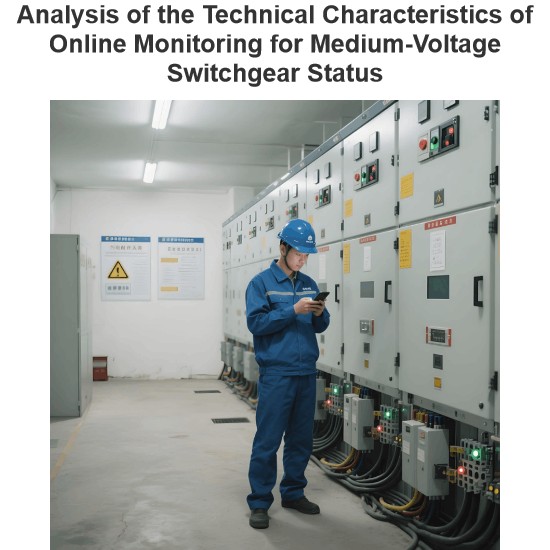Why do you need low voltage switchgears?
Why Low Voltage Switchgear Is Needed
Low voltage switchgear plays a crucial role in electrical systems, primarily used for controlling, protecting, and isolating electrical equipment. Below is a detailed explanation of why low voltage switchgear is necessary:
1. Control Functions
One of the primary functions of low voltage switchgear is to control the operation of electrical systems. Through switchgear, circuits can be opened or closed to control the flow and distribution of power. Specific applications include:
Starting and Stopping Equipment: For example, motors, pumps, compressors, etc.
Load Management: By grouping and timing controls, load distribution can be optimized to avoid overloading.
2. Protection Functions
Low voltage switchgear provides multiple protection mechanisms to ensure the safety of both electrical equipment and personnel. These protective measures include:
Short Circuit Protection: In the event of a short circuit, current can spike dramatically, potentially causing equipment damage or even fires. Circuit breakers or fuses within the switchgear can quickly disconnect the power supply to prevent further damage.
Overload Protection: Prolonged overloading can cause equipment to overheat, reducing its lifespan and potentially leading to failure. Low voltage switchgear can detect overload conditions and automatically disconnect the power supply to prevent equipment damage.
Ground Fault Protection: When a ground fault occurs in a circuit, low voltage switchgear can rapidly cut off the power supply to prevent electric shock incidents.
Under-Voltage and Over-Voltage Protection: Abnormal voltage levels (too high or too low) can affect the normal operation of equipment. Low voltage switchgear monitors voltage levels and takes protective measures when voltages exceed safe ranges.
3. Isolation Functions
Low voltage switchgear also serves an isolation function, allowing specific parts of a circuit to be completely disconnected from the power supply during maintenance and repairs. This ensures the safety of maintenance personnel and prevents accidental electric shocks and other hazards.
Maintenance and Repairs: During equipment maintenance or replacement, relevant circuits can be isolated using switchgear, ensuring that maintenance personnel work in a de-energized environment.
Equipment Replacement: When replacing electrical equipment, switchgear can safely disconnect the power supply to avoid equipment damage or personnel injury.
4. Enhancing System Reliability
Low voltage switchgear helps improve the reliability and stability of the entire power system. Effective control and protection measures reduce downtime caused by equipment failures, extend equipment lifespan, and lower maintenance costs.
Fault Location and Isolation: When a fault occurs in the system, low voltage switchgear can help quickly locate and isolate the fault point, preventing the fault from spreading to other parts.
Automation and Monitoring: Modern low voltage switchgear often includes intelligent control systems that monitor power parameters in real-time and automatically take protective actions based on preset conditions, further enhancing system reliability.
5. Compliance with Regulations and Standards
Many countries and regions have strict electrical safety regulations and standards that require the installation and use of low voltage switchgear to ensure the safety of electrical systems. Using qualified low voltage switchgear not only meets these regulatory requirements but also effectively prevents potential safety hazards.
6. Wide Range of Applications
Low voltage switchgear is applicable in various industrial and commercial environments, including but not limited to:
Industrial Plants: Used for controlling and protecting large machinery and production lines.
Commercial Buildings: Used in distribution systems to ensure stable and safe power supply.
Data Centers: Ensures continuous operation of servers and network equipment.
Residential Buildings: Provides basic power control and protection functions for household distribution systems.
Summary
Low voltage switchgear plays an indispensable role in electrical systems, mainly in the following aspects:
Control Functions: Enables opening and closing of circuits to control the flow and distribution of power.
Protection Functions: Provides short circuit, overload, ground fault, under-voltage, and over-voltage protections to ensure the safety of equipment and personnel.
Isolation Functions: During maintenance and repairs, isolates circuits from the power supply to ensure the safety of maintenance personnel.
Enhancing System Reliability: Improves the reliability and stability of power systems through effective control and protection measures.
Compliance with Regulations and Standards: Meets electrical safety regulations and standards, preventing potential safety hazards.
Therefore, low voltage switchgear is a key component for ensuring the safety, stability, and efficient operation of power systems.
The Electricity Encyclopedia is dedicated to accelerating the dissemination and application of electricity knowledge and adding impetus to the development and innovation of the electricity industry.













